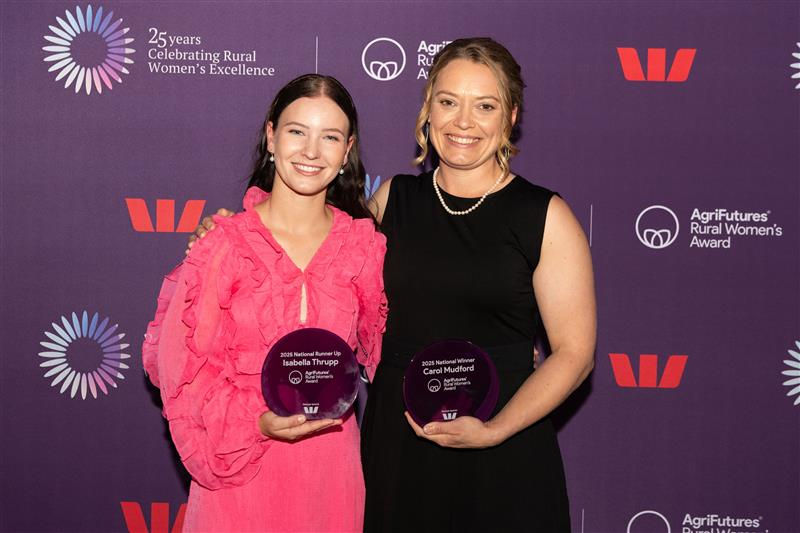Grain Industry Blueprint for public consultation, inviting feedback to help shape the state's grains sector through to 2035.
- Flow Australia
- Jul 14
- 4 min read
Grain Producers SA has released a draft of the updated South Australian Grain Industry Blueprint for public consultation, inviting feedback to help shape the state's grains sector through to 2035.

The 2025–2035 Blueprint builds on the original strategy released in 2020, which helped guide coordinated growth across the value chain. With the sector surpassing its original target of $6 billion gross food revenue years ahead of schedule, the refreshed Blueprint aims to cement South Australia as a national leader in fostering a trusted, sustainable and highly productive grain industry.
GPSA Chief Executive Officer Brad Perry said the draft Blueprint, developed by consultant Hudson-Howells with input from growers, researchers, exporters and supply chain partners now needs broader industry feedback to help shape the final version.
“This draft has been built through wide-ranging consultation and now it’s over to grain producers and industry stakeholders to provide input that will ensure it’s practical, relevant and forward-looking,” Mr Perry said.
“The Blueprint draft is just the starting point. We’re now inviting all voices across the industry to help us finalise a Blueprint that truly reflects where industry needs to head for the next decade.
“The Blueprint sets out clear strategic priorities around production sustainability, market alignment and innovation adoption; all grounded in real-world conditions faced by South Australian grain producers.”
The updated Blueprint focuses on three strategic pillars:
Secure and Sustainable Production Systems
Trusted Markets and Market Alignment
Innovation, Adoption and Adaptability
These are supported by an enabling principle focused on leadership, advocacy and collaboration across the grain value chain.
The updated Blueprint project was made possible due to funding support from the State Government.
“The grains industry is a cornerstone of South Australia’s economy and a vital part of our regional communities,” Minister for Primary Industries and Regional Development Clare Scriven said.
“This updated Grain Industry Blueprint, supported by State Government funding, provides a strong foundation to help the sector adapt to new challenges, embrace innovation and build on its global reputation for quality and sustainability.
“This draft Blueprint reflects the increasing importance of innovation, sustainability, and global competitiveness in the grains sector. I commend GPSA for leading this work and welcome the contribution of growers to ensure it delivers practical outcomes on the ground.”
The draft Blueprint and a summary of key changes can be found on the GPSA website.
Submissions will be open until Friday, 18 July 2025.
In other news, Australia’s red meat industry exported new record volumes of beef and mutton in the 2024-2025 financial year.
According to Meat & Livestock Australia (MLA), total beef and veal exports for the financial year reached 1.4 million tonnes, the highest annual volume ever. Mutton exports also hit a new record at 256,104 tonnes. Lamb exports totalled 363,109 tonnes, making it the second-largest financial year for lamb exports.
June 2025 alone saw 134,593 tonnes of beef exported, marking the highest monthly beef export volume ever. This figure represents a 4% increase from May, and a 27% rise compared to June 2024.
According to MLA Managing Director Michael Crowley, these results reflect the strength of global demand for Australia’s red meat sector.
“Achieving record exports across both beef and sheepmeat in a single financial year is not just a milestone—it’s a reflection of Australia’s resilience and agility in a competitive global market,” Mr Crowley said.
“We’ve seen double-digit growth in chilled and frozen exports, strong performance across both grassfed and grainfed beef, and significant increases in key markets like Mainland China, South Korea, and the United States.
“These results are underpinned by the industry’s commitment to quality, sustainability, and innovation, as well as the strength of our trade relationships.”
Total red meat exports in June 2025 reached 209,074 tonnes, 20% higher than the same month last year. Chilled exports rose 11% year-on-year to 44,715 tonnes, while frozen exports increased 22% to 164,359 tonnes.
Beef exports to the United States were particularly strong, totalling 35,343 tonnes in June, which is 23% higher than the same month last year.
“Despite facing the 10% imposed tariff by the United States, Australian red meat continues to command strong demand, enhanced by our international reputation for product quality, safety, and supply chain integrity,” Mr Crowley said.
Other key markets also saw significant growth in June, including South Korea and South-East Asia which recorded increases of 16% and 20% respectively.
Lamb exports in June totalled 32,437 tonnes, 4% higher than June 2024 despite a seasonal dip from May. Exports to Greater China rose 53% year-on-year, and exports to Canada jumped 93%.
Grainfed beef exports rose 29% year-on-year to 39,886 tonnes, and grassfed exports climbed 26% to 94,707 tonnes.
“These figures show that Australia is maintaining its position as a global leader in red meat exports but expanding upon it,” Mr Crowley said.
“With continued focus in sustainability, quality assurance, and strategic market access, Australia is well-positioned to build on this momentum through the second half of 2025 and beyond.”






Comments